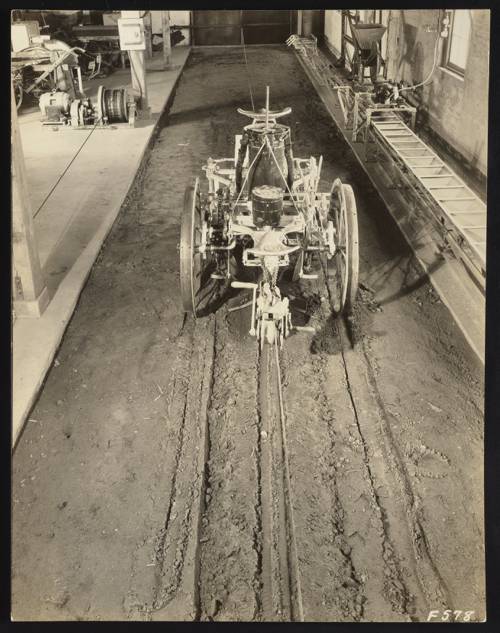
FAQ About Indoor Plant Soil Types and Mixes

What are the main types of soil for indoor plants?
The main types of soil for indoor plants include standard potting soil, cactus & succulent mix, orchid mix, and African violet soil. Standard potting soil is a versatile mix ideal for most plants, cactus & succulent mix is well-draining with sand and perlite added, orchid mix typically contains bark and charcoal to suit orchids' aerial root systems, and African violet soil is lighter and helps retain moisture for these particular plants.

Why is the right soil mix important for indoor plants?
The right soil mix is crucial because it influences water retention, aeration, root structure, and nutrient availability. The correct soil ensures that the plant receives enough moisture and nutrients without becoming waterlogged, which could lead to root rot. Additionally, proper soil composition supports healthy root development, vital for the overall growth of the plant.

How does a cactus and succulent mix differ from regular potting soil?
Cactus and succulent mix is specifically formulated to ensure excellent drainage and mimic arid environments. Unlike regular potting soil, which retains more moisture, cactus mix includes components like sand, perlite, and grit to increase drainage and reduce the risk of root rot caused by excess water.

What components are typically found in an orchid soil mix?
An orchid soil mix often includes bark chips, perlite, charcoal, and sometimes coconut husk. These components promote excellent aeration and drainage, essential for epiphytic orchids which have unique aerial root systems. This mix helps to prevent the roots from sitting in water, mimicking the natural conditions of orchids in the wild.

How can I make my own indoor plant soil mix?
To make your own indoor plant soil mix, start with a base of peat moss or coco coir for moisture retention. Add perlite or vermiculite for aeration and drainage, and if needed, sand or grit for improved drainage in mixes for succulents. Compost can also be added for nutrients. Customize the ratios based on the specific needs of your plant species.

What is the role of perlite in indoor plant soil mixes?
Perlite is a lightweight, white volcanic rock used in soil mixes to enhance drainage and aeration. It helps prevent soil compaction, thereby allowing roots to grow freely and access oxygen. This component is especially important in reducing the risk of root rot by ensuring excess water can drain away.

Can I use garden soil for my indoor plants?
It is not recommended to use garden soil for indoor plants. Garden soil is heavier and may not drain well, increasing the risk of root rot. It can also contain pests and weeds. Indoor plant soil is specifically formulated to provide the drainage, aeration, and pest-free environment necessary for healthy indoor plant growth.

What are the benefits of using peat moss in soil mixes?
Peat moss is an excellent addition to soil mixes because it improves moisture retention and helps maintain a stable soil pH. It is lightweight, which helps keep potted plants from becoming too heavy. Peat moss is beneficial for plants that need consistently moist conditions.

How often should the soil of indoor plants be changed?
Generally, indoor plant soil should be changed every 1 to 2 years. This depends on factors such as plant size, growth rate, and soil condition. Over time, soil can lose nutrients and become compacted, reducing its effectiveness. Repotting with fresh soil ensures that plants continue to receive adequate nutrition and aeration.

What is coco coir, and why is it used in indoor plant soil?
Coco coir is a natural fiber extracted from coconut husks. It is used in indoor plant soil mixes as a sustainable alternative to peat moss. Coco coir has excellent moisture retention and aeration properties, providing a neutral pH environment that supports robust root growth.

How does vermiculite benefit indoor plant soil?
Vermiculite is a mineral that, when added to soil mixes, aids in moisture retention and aeration. It helps to keep the soil well-aerated, which is vital for root growth and health. Vermiculite also absorbs nutrients from fertilizers, slowly releasing them as needed by the plant.

Why should I choose a specific soil mix for African violets?
African violets thrive in a particular soil mix that is light, well-aerated, and retains moisture without becoming waterlogged. The soil often includes peat moss or coco coir, vermiculite, and perlite. Using this specialized mix ensures healthier growth and blooming by providing ideal growing conditions.

What are some signs that my indoor plant needs a soil change?
Signs that an indoor plant may need a soil change include stunted growth, yellowing leaves, poor water absorption, and foul odor from the soil. Over time, soil can become compacted and less effective in providing nutrients, which necessitates refreshing the potting mix.

Is sand beneficial for all indoor plant soil mixes?
Sand can be beneficial for certain indoor plant soil mixes, particularly for succulents and cacti, because it enhances drainage. However, it is not ideal for all plants as it may provide too much drainage for species that prefer more moisture retention. Understanding the specific needs of your plant is crucial when adding sand to the mix.

How do I choose the right soil mix for my plant?
To choose the right soil mix, consider the specific needs of your plant, such as its preferred moisture level, aeration, and nutrient requirements. Research whether the plant thrives in well-draining soil, moisture-retentive soil, or a particular pH level. Selecting a specialized soil mix designed for that plant type can ensure optimal growth conditions.

Can I reuse old soil for new plants indoors?
Reusing old soil is possible, but not always recommended. If you choose to reuse soil, it's essential to sterilize it to eliminate pests, diseases, and weed seeds. Enhance it by adding fresh organic matter, perlite, or other necessary amendments to restore its nutrient content and improve its structure.

What role do nutrients play in indoor plant soil mixes?
Nutrients in soil mixes provide essential elements such as nitrogen, phosphorus, and potassium needed for plant growth. They support various plant functions, including photosynthesis, cell growth, and root development. Regular replenishment of nutrients, through either fresh soil or fertilizers, is crucial for maintaining a healthy indoor plant.

Are there any organic options for indoor plant soil mixes?
Yes, there are organic options for indoor plant soil mixes that use natural and sustainable components. These mixes often include organic compost, coco coir, rice hulls, and organic fertilizers. Choosing organic soil can ensure a chemical-free environment that supports eco-friendly gardening practices.

What can happen if I use the wrong soil mix for my indoor plant?
Using the wrong soil mix for your indoor plant can lead to a variety of issues like poor water drainage, root rot, nutrient deficiencies, and stunted growth. The soil type directly affects the plant's ability to take up water and nutrients, which are essential for healthy growth. Improper soil conditions can cause stress and make plants more susceptible to diseases.
